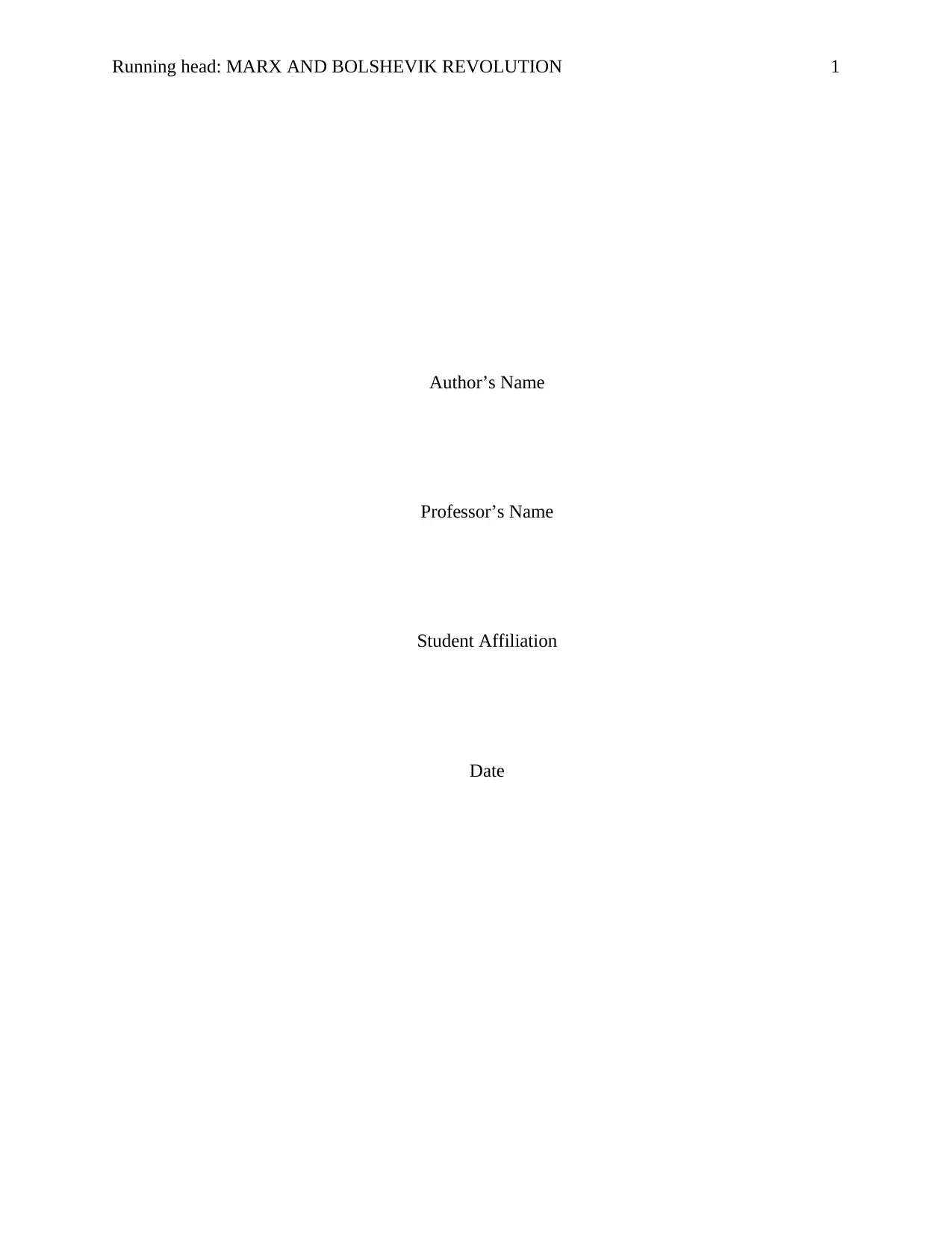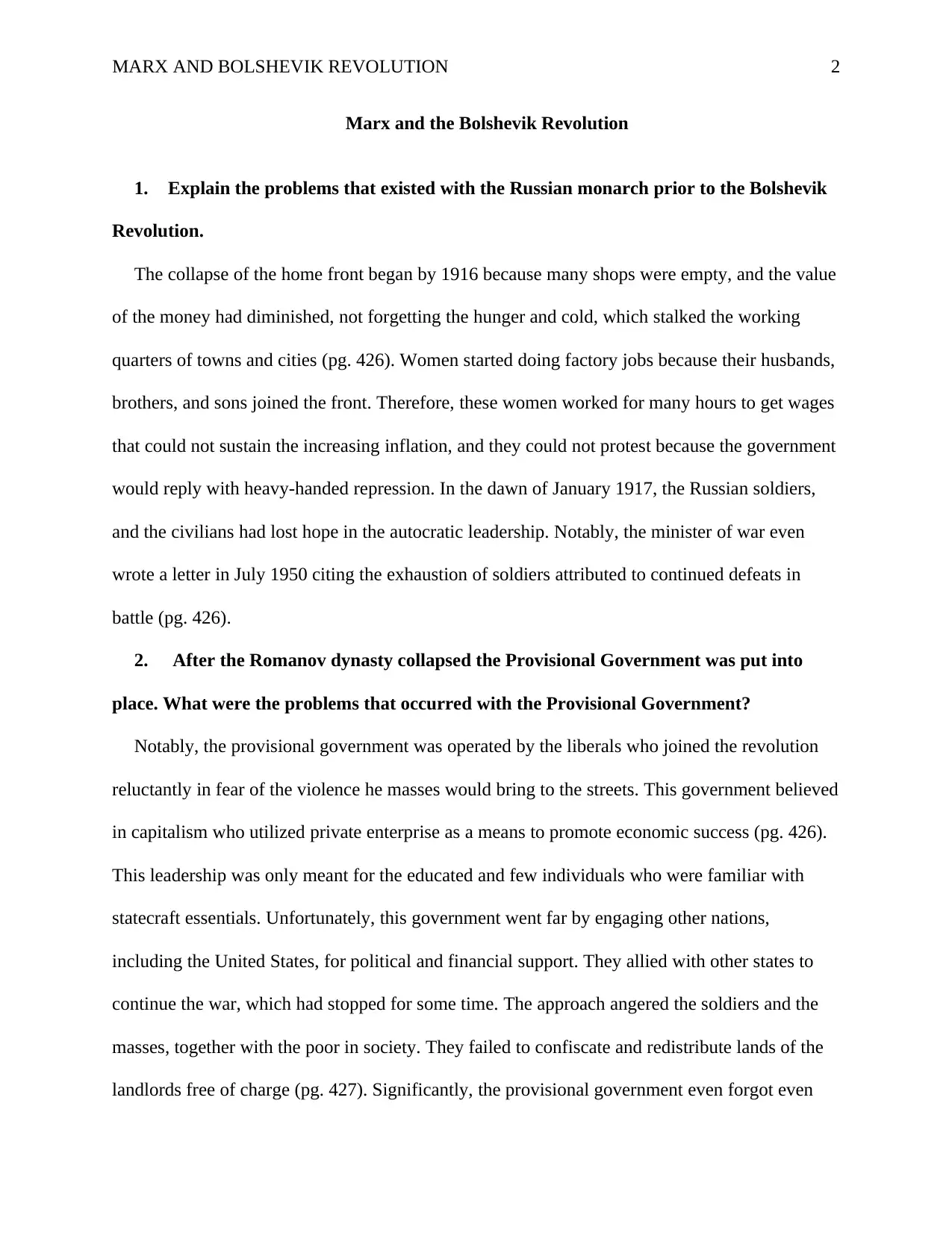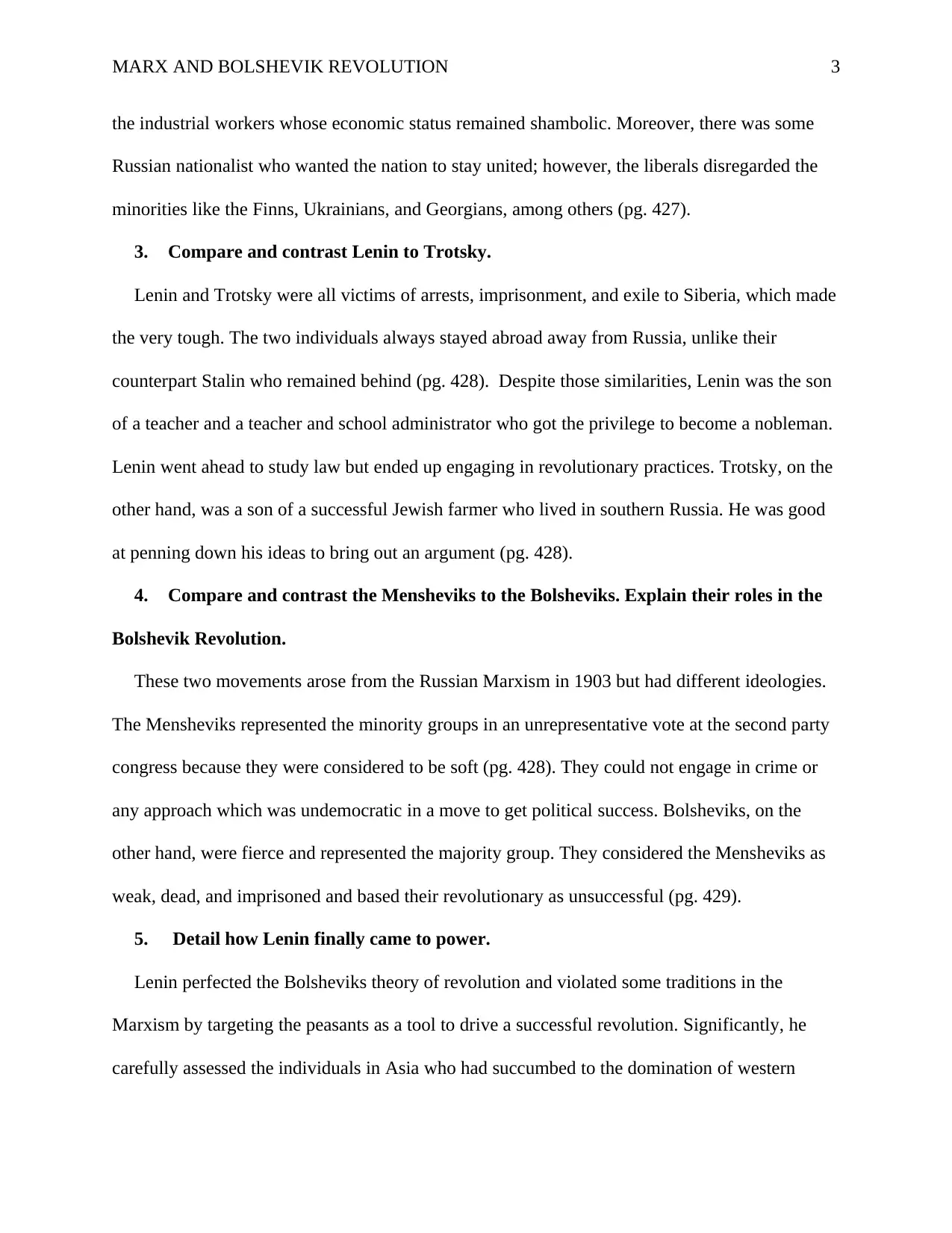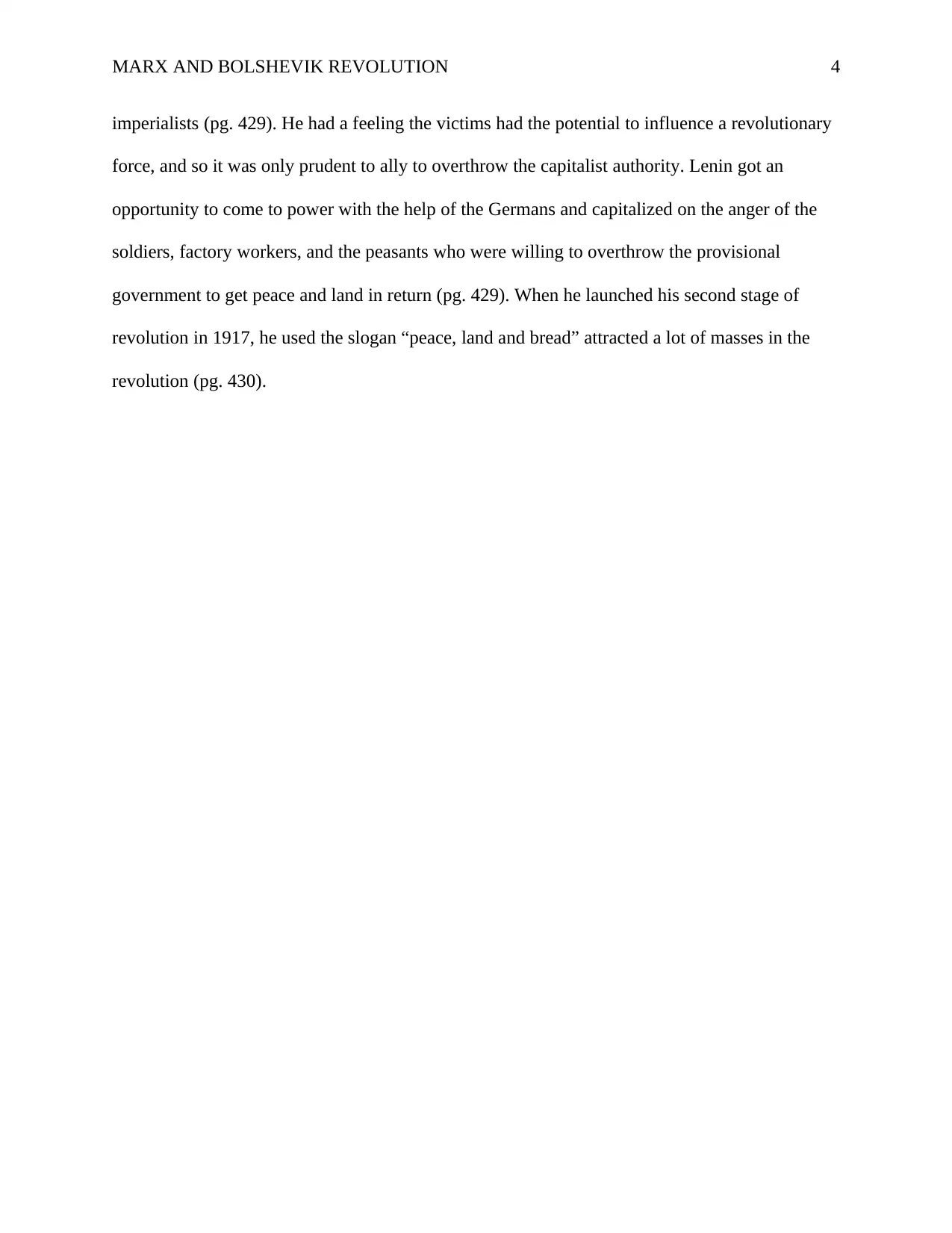The Impact of Marx on the Bolshevik Revolution: A History Analysis
VerifiedAdded on 2022/09/26
|4
|838
|26
Homework Assignment
AI Summary
This assignment examines the historical context of the Bolshevik Revolution, beginning with the problems within the Russian monarchy, including economic hardships and loss of faith in the leadership. It then analyzes the failures of the Provisional Government, such as its reliance on capitalism and disregard for minority groups, and its continuation of the war. The assignment also compares and contrasts key figures like Lenin and Trotsky, highlighting their similarities and differences in background and approach. It further distinguishes between the Mensheviks and the Bolsheviks, explaining their differing ideologies and roles in the revolution. Finally, it details Lenin's rise to power, emphasizing his strategic use of revolutionary theory, his alliance with the Germans, and his ability to capitalize on the discontent of the masses through the slogan "peace, land, and bread."
1 out of 4





![[object Object]](/_next/static/media/star-bottom.7253800d.svg)